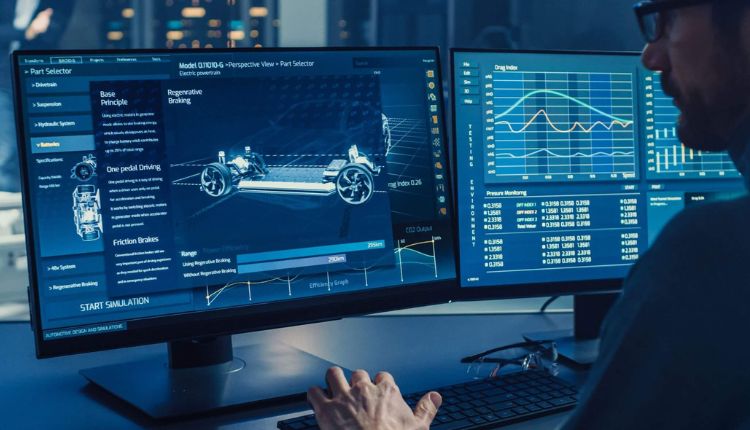Automotive software development services are a service that are provided to car manufacturers, auto dealerships, and auto repair shops to help them create, manage, and support applications that are used by their customers and employees. These software programs can range from basic data management applications to complex, high-performance, and specialized application systems. They can also include robotics and virtual computing models, which are used to speed up and simplify a wide range of tasks in car production, sales, and other functions.
Data Analytics
Data analytics has been a driving force behind the transformation of the automotive industry. The use of data has led to a host of innovations including smarter vehicles and enhanced customer interaction. A robust and efficient Automotive Software Development Services analytics system can lead to significant cost savings and increased customer satisfaction.
Today’s automobiles are packed with a lot of sensors and telematics. These devices gather data from the vehicles and send it to the manufacturer for cleansing and analysis. This is done in real time.
Automakers use data science to optimize fuel efficiency on a company-wide basis. They also utilize predictive analytics to mitigate the risk of product recalls.
The automotive industry is going through a major shift toward a global supply chain. As a result, it is facing a number of challenges from competitors and consumer trends. However, with the right analytics, automakers can remain scalable and flexible, even in the face of market and consumer pressures.
Robotics
Robotics is a field of study that focuses on the design, coding, and operating of robots. These machines interact with their environment through effectors and sensors. They can perform a variety of tasks, from assembly line packing to minimally invasive surgery.
Robotics is a complex field that requires a high-level of technical proficiency. In order to develop and test a robotic application, developers must first procure the required hardware, identify the right components, and then build them into an executable software.
The robotics community offers a wide range of tools, algorithms, and robotic modules to choose from. The right choice can mean a better product, reduced cost, and increased productivity.
One of the most powerful tools is the R4A architecture. This architecture hides the low-level knowledge and allows developers to write applications using high-level operations.
Virtualized Computing Models
If you’re planning a new vehicle project, virtualized computing models could be worth a look. There are numerous benefits, particularly when it comes to lowering development costs. In addition, they can increase quality. Virtualization can also lower the cost of total ownership.
Today’s modern vehicles include hundreds of electronic control units. They are also equipped with a network of wired and wireless communication systems. The complexity of these systems is increasing. Automated driving is a contributing factor, as is the introduction of innovative technologies.
New business models require vehicle-to-cloud connectivity. This will demand an increased focus on co-development initiatives and software-based connectivity. Automotive hardware has to meet the highest safety and security requirements.
Safety is a top concern for owners of SDVs. This will require a hypervisor that can guarantee isolation of safety-critical processes. It also must offer localized recovery of failed applications.
Automation of Car Selection and Purchase Processes
Embedded software has become a major differentiator for automotive OEMs. Autonomous vehicles, connectivity, electrification, and shared mobility all rely heavily on leading-edge software. However, there are many factors to consider in developing the best software, ranging from security to performance. Choosing the right software development tools and process is crucial.
The latest automotive software market forecast predicts that sales will grow at an astounding three times the industry average. In fact, the market is expected to grow at an annual rate of 12 percent from 2020 to 2030. Considering the sheer scale of the market, companies need to adopt a multi-faceted approach.
Among the most common challenges associated with developing Automotive Software Development Services is defining requirements in a way that is both scalable and cost effective. There is also a need for automakers to embrace new practices in order to optimize existing capabilities.
Regulatory Requirements Concerning Cybersecurity, Vehicle Safety, and Quality
The automotive industry has undergone profound transformation in recent years. This has led to a need to address cybersecurity, safety and quality issues for vehicles. To address these issues, new regulations will be implemented from July 2024. These new regulations will apply to passenger cars, trucks, vans, buses and agricultural vehicles. They will require vehicle manufacturers to adopt new requirements, implement new processes, and conduct audits to demonstrate compliance.
Cybersecurity is an important issue for all automotive players, including suppliers and OEMs. As vehicles become more connected, the risk of a cyberattack rises. Therefore, it is crucial to evaluate the entire software development process to ensure cybersecurity. In addition, a range of security tools must be considered.
What’s Next?
One key regulation is UNR 155. The UN Economic Commission for Europe’s Vehicle Regulation (UNECE R155) defines general requirements for vehicle cybersecurity. It covers the entire lifecycle of a vehicle, from design and manufacture to decommissioning. For example, UNR 155 requires manufacturers to carry out safety system checks and targeted application of data analysis tools.

